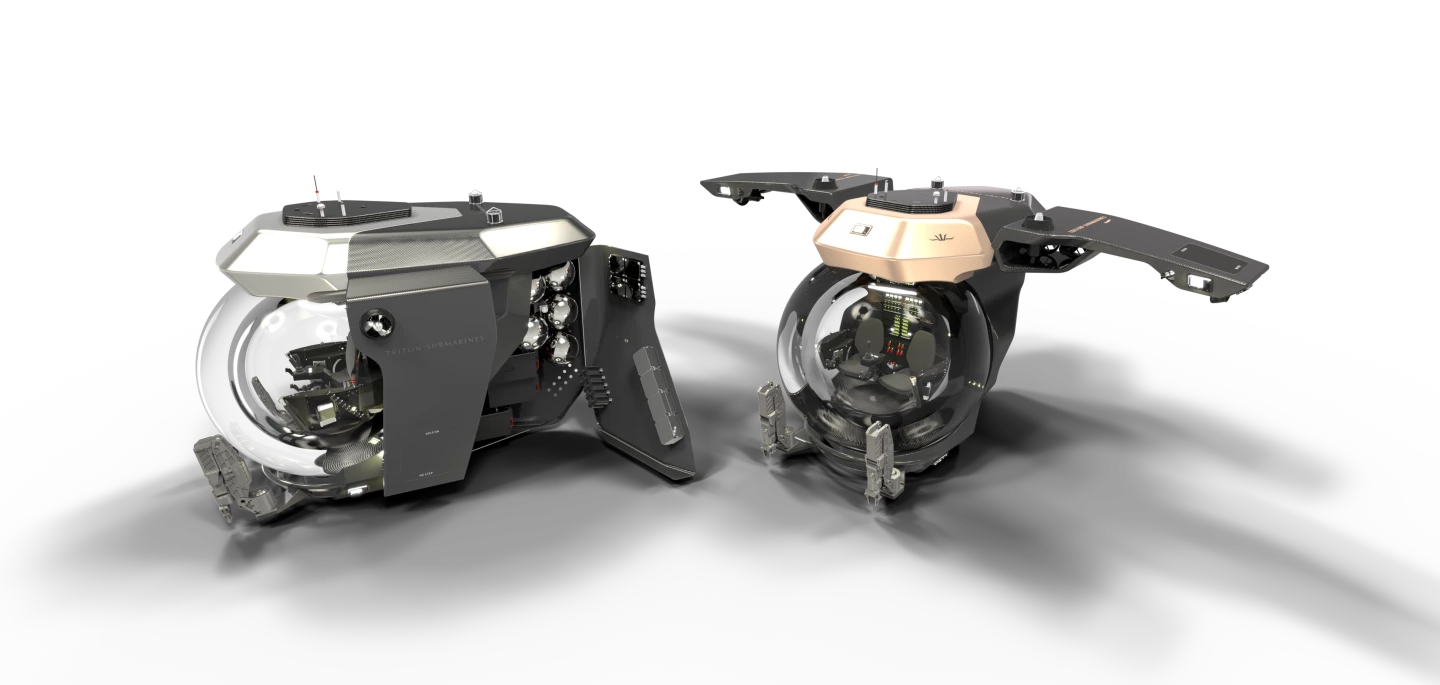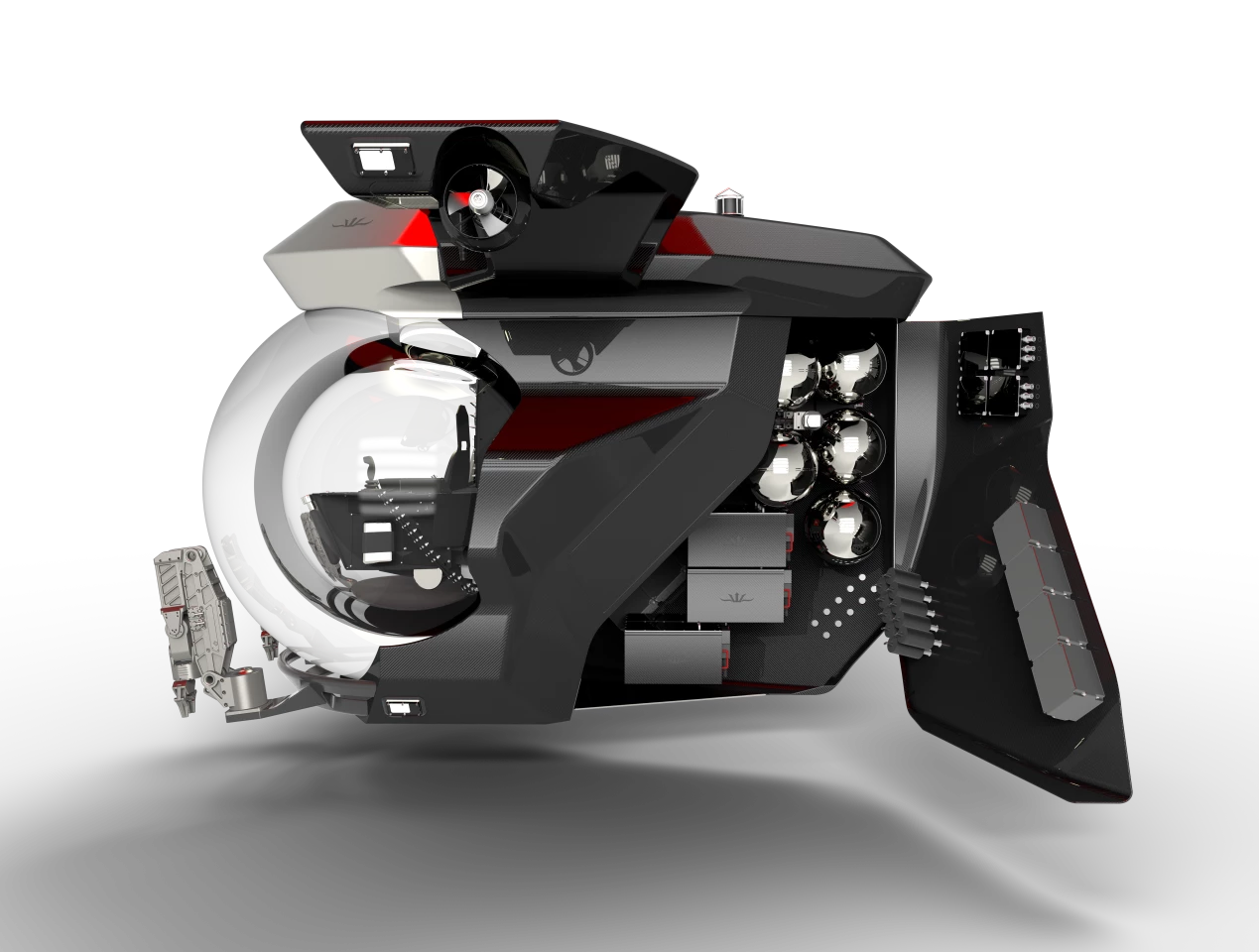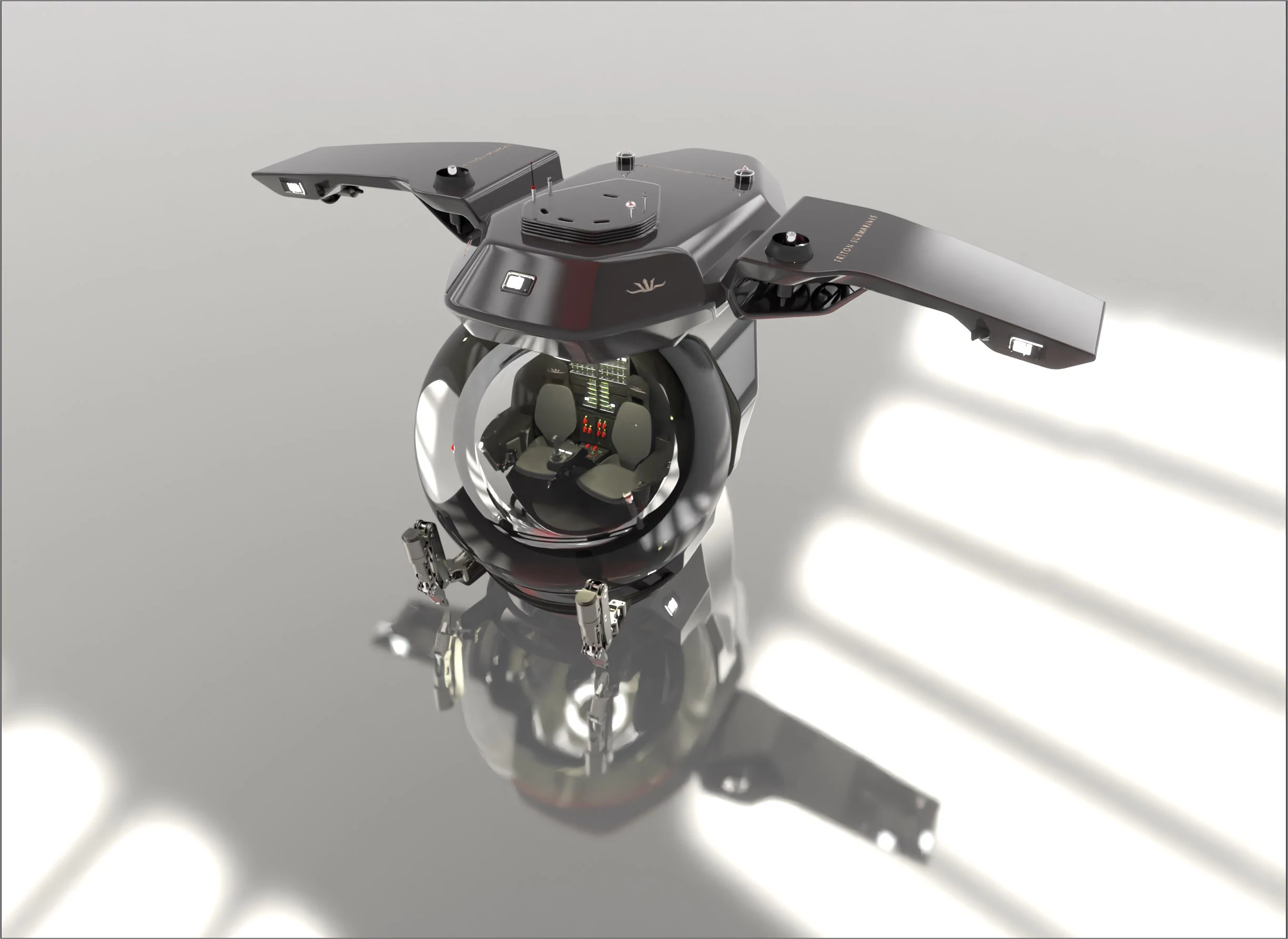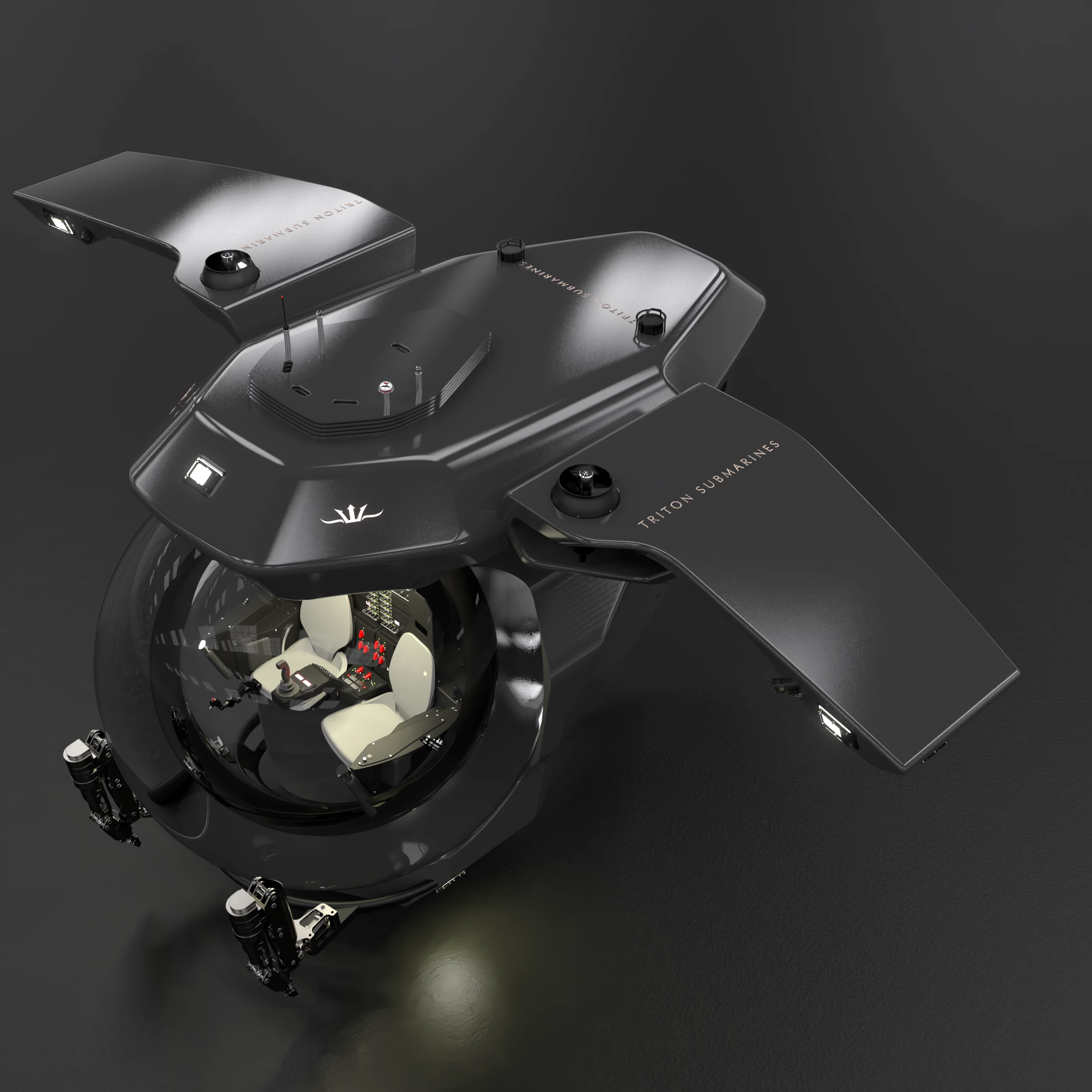Florida's Triton has been making high-end civilian submarines for more than a decade now, dividing its sales between scientific explorers, commercial and cinematography clients, and ultra-rich superyacht owners looking to spruce up their wet garages with something more interesting than a jet ski.
The key to Triton's market dominance has been its mastery of the acrylic sphere. Its bubble-subs give drivers and passengers an ultra-widescreen panoramic view of the world under the water, totally free from optical distortion.
The hull simply disappears when you're underwater; editors on the BBC's Blue Planet II series couldn't distinguish between footage shot from inside the thick bubble and footage shot from external cameras. You're sitting there thousands of feet under the surface, totally immersed in the undersea world, and yet free to move around in air-conditioned comfort at terrestrial pressure levels.
In the past, Triton has made these spheres by casting two separate acrylic half-domes of Plexiglass and sticking them together with an invisible adhesive, but in recent years as the company's ambitions have expanded, it's been creating them from a single slab that's heated and then formed into shape.

That's the only way you could possibly build a bubble as large as the one used in the remarkable 6-seat 3300/6 we first saw late last year, and it's certainly the only way you could guarantee the strength, thickness and optical perfection needed to build Triton's latest machine.
The Triton 13000/2 Titanic Explorer will be the deepest diving acrylic bubble sub ever built, by a long way. It'll be capable of diving to 4,000 m (13,123 ft), making it the only transparent sphere that can take you and a buddy down to the wreck of the Titanic, some 3,800 m (12,500 ft) under the surface.
Triton's dropped in on Jack and Rose's love nest once before, mind you, back in 2019. But to do so, it needed to use its monstrous 36000/2 sub, which has a titanium sphere hull capable of taking two people to the bottom of the Marianas trench. Indeed, it was the first manned mission to the Titanic wreck in some 14 years, so rather a special achievement.

Thus, the ability to visit the world's most famous shipwreck – and do so in a comfortable, see-through ball – is one heck of a selling point. But the new sub has another extraordinary trick up its sleeve in the form of a set of huge, articulating gull wings coming off the top. These fold down against the sides of the bubble for a nice slippery hydrodynamic shape as you drop down or rise up through the water, meaning the journey down to Titanic-level depths takes just two hours, "significantly faster than previously possible."
Once they're up and out, they stretch to a width of 6 m (19.7 ft), and offer a couple of key advantages. Firstly, if you're down there to shoot photo or video, the wings are fitted with lighting and camera mounts, giving you the ability to shoot things from one point and light them from another, moving either the camera or the light at will by controlling the wings. That'll be terrific for cinematographers – lights too close to the camera tend to wash out an image and make it feel flat and boring – and it'll be equally handy to be able to swivel the camera around for wide-angle shots of the presenter and crew in the bubble in selfie mode.
Secondly, the wings also contain the sub's propulsion units, so if you're close to the sea floor or a delicate wreck, you can get the thrusters up high and wide before you move around and disturb it. Of course, the folding wings come in handy when it's time to park the sub in a garage, too, or in an instance where you need to squeeze through a tight gap.

A new Silent Glide feature is also notable; while the sub's descending, it can make "gentle, sweeping turns," or maintain a fixed heading, or track an object, or glide towards a target in a controlled fashion, without using its thrusters, so as not to disturb wildlife or introduce noise into a video recording.
The Titanic Explorer will carry enough battery power and life support for two-person expeditions longer than 12 hours. Interestingly enough, that takes just 40 kWh worth of battery. It uses four main and four auxiliary direct drive electric thrusters, each putting out up to 5.5 kW. It weighs 12,000 kg (26,455 lb), and measures 4.45 x 2.75 x 3 m (14.6 x 9 x 9.8 ft) when it's folded up, so it ain't small.
There's no information as yet on price or availability for the Titanic Explorer 13000/2, but I think we can safely assume it's a lot, and made to order. Enjoy the video below to get a sense of why the experience of going underwater is so much more impressive in an acrylic bubble.
Source: Triton Submarines









